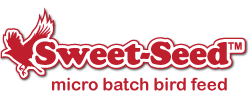How Do Hummingbirds Pollinate?

Hummingbirds play a critical role in the pollination of many different types of plants. For such tiny birds, they can make a huge difference in agriculture and floriculture – but how do they do it? Understanding how hummingbirds pollinate can help you put these little flying jewels to work in your garden, flowerbeds, and landscape!
What Is Pollination?
Pollination is the act of pollen being transferred from a plant’s anther to its stigma, whether on the same plant or on separate plants. This is the process of fertilization that enables seed production, a critical part of the plant’s reproductive process. Without pollination, plants will not reproduce, resulting in lower biodiversity, struggling or diminished crops, and other severe effects.
Many plants have evolved mechanisms to encourage pollination, such as physical structures and shapes that make it easier for pollen to be successfully transferred. For example, many flowers have evolved tubular shapes specially suited for hummingbirds’ needle-like bills, along with sweet nectar to meet the birds’ nutritional needs and encourage them to stay at the flower long enough to collect pollen. Flower shapes have also evolved to be accessible as the birds hover, and bright colors can attract hummingbirds to specific plants. While red may be a preferred shade, hummingbirds will actually visit blooms of any color if nectar is available and accessible.
How Hummingbirds Assist Pollination
Hummingbirds visit hundreds of flowers every day, sipping on the small amounts of nectar available from each bloom. As the bird hovers close to the bloom, reaching deep into a floral well for every drop of nectar, grains of pollen from the anther will rub onto the hummingbird’s head, bill, or belly. The bird then moves on to a different flower to repeat the performance, easily transferring pollen from one plant to the next. Only a single grain of pollen needs to be transferred to successfully fertilize a different plant, something even these tiny birds can do with ease.
Because hummers visit so many blooms, a small hummingbird population can have a dramatic impact on local wildflowers to improve plant diversity and foster healthier, stronger plant populations. This will create more ecologically sound wildlife habitats as well, ensuring that other birds, insects, and many types of animals have rich, nurturing ecosystems in which to thrive.
Plants Hummingbirds Pollinate
Any flowers that hummingbirds enjoy are blooms they can help pollinate. A range of top hummingbird flowers are prime candidates for bird-assisted pollination, including:
- Bee balm
- Bleeding heart
- Columbine
- Coneflower
- Foxglove
- Fuchsia
- Honeysuckle
- Lantana
- Larkspur
- Petunia
- Salvia
- Zinnia
While pollinating beautiful flowers can improve flowerbeds and decorative flowerpots, hummingbirds actually pollinate a wide range of agricultural plants as well. Food plants that benefit from hummingbird-assisted pollination include:
- Almond
- Avocado
- Banana
- Blueberry
- Cherry
- Coffee
- Currant
- Grapefruit
- Guava
- Lemon
- Mango
- Orange
- Passionfruit
- Peach
- Plum
- Prickly pear cactus
- Raspberry
- Sunflower
Undoubtedly, many other crops also benefit from hummingbirds’ presence. Even if the birds do not directly pollinate between plants or are not the primary pollinators, they help control insect populations naturally. This can help minimize the need for chemicals and keep all crops healthier and more robust.
Using Hummingbirds’ Power of Pollination
There are many ways even casual backyard birders can harness hummingbirds’ energy to help with pollination. By planting hummingbird-friendly flowers around a garden, these tiny birds will also investigate any blooming plants in the garden rows as well as take care of many problematic insects, such as aphids, ants, gnats, and mosquitos. Positioning feeders to entice hummers right to areas that need pollination assistance – such as key flowerbeds, citrus trees, or berry bushes – can also encourage more hummingbird helpers.
With a better understanding of what pollination is, how it works, and how hummingbirds contribute to the process, it is possible to encourage these birds to engage in even more pollination help for more abundant flowerbeds and healthier harvests, no matter how many hummingbirds are offering assistance.
